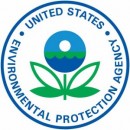
Now that the Independence Day holiday has come and gone, here we are in the full swing of summer. Make sure that your workplace has a solid plan in place to mitigate the effects of the inevitable hot weather, and to safely account for the absence of employees that are away on vacation—it’s “prime time” to be away right now. Let’s all get through the summer safely. Here’s the latest regulatory news:
PHMSA
The agency published an ANPRM to solicit stakeholder feedback on initiatives it is considering that may modernize the Hazardous Materials Regulations and improve efficiencies while maintaining or improving a current high level of safety. This action solicits comments and input on questions related to 46 distinct topics under consideration. Any comments, data, and information received will be used to evaluate and potentially draft proposed amendments. Comments must be received by October 3, 2023. Here’s a preview of the extensive list of topics up for consideration, with items your author feels might be of the highest interest to the most people highlighted:
A. Evaluation of Carrier Maintenance of Emergency Response Information
B. Non-Bulk Packaging, Intermediate Bulk Container, and Large Packaging Periodic Retest Extension
C. Use of Non-Bulk Package Test Samples for Multiple Tests
D. Aerosol Classification Alignment
E. Residue IBC Exceptions
F. Requirements for Damaged, Defective, or Recalled Lithium Cells and Batteries
G. Sampling and Testing Program for Unrefined Petroleum-Based Products
H. Basic Oil Spill Response Plan Applicability
I. Standards Incorporated by Reference Update J. EX-Number Display Requirements
K. Section 173.150 Ethyl Alcohol Exception
L. Limited Quantity Training Exception
M. Exceptions for Small Quantities of Division 4.3, PG I Material
N. Recycling Safety Devices
O. Creation of Basic Description and Shipping Description Definitions
P. Removal of the 60-Day Renewal Requirement for Approvals and Special Permits
Q. Design Certifying Engineer Experience
R. Oxidizing Gases by Air S. Part 176 Vessel Requirements Update
T. LTD QTY Shipping Paper Exception by Vessel
U. Convention for Safe Containers Data Plate and Inspection Requirements
V. Identification of Freight Containers in Rail Transportation
W. Exceptions for Rail Transport of Lithium Batteries for Purposes of Recycling and Disposal
X. Tank Car Manway Inspections
Y. Acid Resistant Manways for DOT 111A100W5 Tank Cars
Z. Tank Car Thermal Protection Standard
AA. Unoccupied Locomotive Train Placement
BB. Offering a Tank Car After Qualification Expiration
CC. Non-Destructive Examination
DD. Updating Requirements for Transporting Hazardous Materials on Passenger Carrying Motor Vehicles EE. EPA 27 Test Method for Cargo Tanks
FF. Mounting Pads for Cargo Tank Damage Protection Devices
GG. Cargo Tank Hydrostatic Test Medium
HH. Cargo Tank Thickness and Corrosion Inspection Requirements
II. Remove Exceptions for Cargo Tank Inspections
JJ. Segregation of Detonating Explosives for Highway Transportation
KK. Cargo Tank Reflectivity
LL. Cargo Tank Registered Inspector Training and Qualification
MM. Cargo Tank Design Certifying Engineer Training and Qualification
NN. Cargo Tank Registered Inspector Verification and Documentation
OO. Cargo Tank Design Certifying Engineer Verification and Documentation
PP. Cargo Tank Registered Inspector Revised Definition
QQ. Cargo Tank Design Certifying Engineer Revised Definition
RR. NTSB Safety Recommendations R–20– 1 to R–20–4
SS. Placard Display on Intermediate Bulk Containers
TT. Emerging Technologies
To find out detailed information about what sorts of changes might be under consideration for each topic, and to learn how to provide comment and what sort of information may be required to respond to each item, see the full ANPRM here.
PHMSA has also released its next tranche of Special Permit actions. See them at the links below:
In consonance with the summer travel season, the agency has also published a guide aimed at outdoor enthusiasts who may not be DG-cognizant that will help them identify hazmat they may not be aware they have (things like bear spray and strike-anywhere matches) and how to transport and handle it safely. See the new guide here.
FMCSA
The agency proposes to adopt a new Federal Motor Vehicle Safety Standard (FMVSS) to require automatic emergency braking (AEB) systems on heavy vehicles, i.e., vehicles with a gross vehicle weight rating greater than 4,536 kilograms (10,000 pounds). This notice also proposes to require nearly all heavy vehicles to have an electronic stability control system that meets the equipment requirements, general system operational capability requirements, and malfunction detection requirements of FMVSS No. 136. An AEB system uses multiple sensor technologies and subsystems that work together to sense when the vehicle is in a crash imminent situation and automatically applies the vehicle brakes if the driver has not done so or automatically applies more braking force to supplement the driver’s applied braking. Phase in times would range between three and five years depending on the manufacturer’s size and operation. See this potentially very significant proposed rulemaking here.
FRA
The agency extended the comment period for its proposed rules that would, if enacted, impose new training and certification requirements for railroad train dispatchers and signal maintenance employees. Find out more about the extensions at the links below:
OSHA
The agency published an ICR related to its safety standard for the creation and maintenance of compliant walking and working surfaces. Trips and falls are a common source for workplace injuries and so OSHA has standards related to providing safe pathways for workers. See the ICR here.
A second ICR relates to the Asbestos Standard. Asbestos is a known carcinogen and it tightly regulated for any use in industry. See the ICR here.
Labelmaster is a full-service provider of products, shipping and training software, and professional consulting services to assist the DG and HS&E professional to comply with national and international regulations. See our full line of solutions at www.labelmaster.com.


